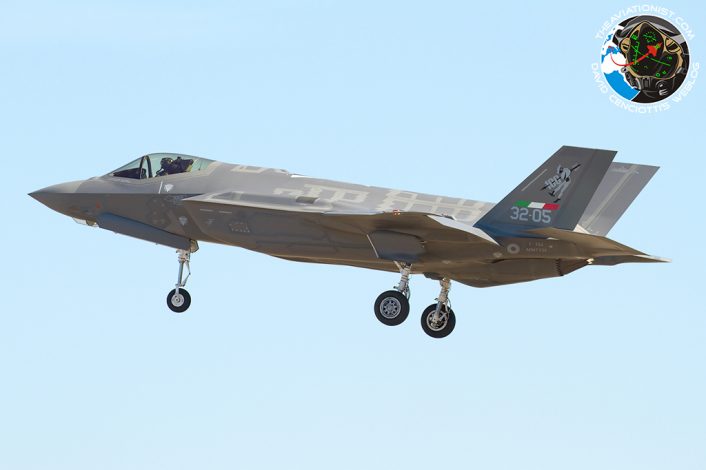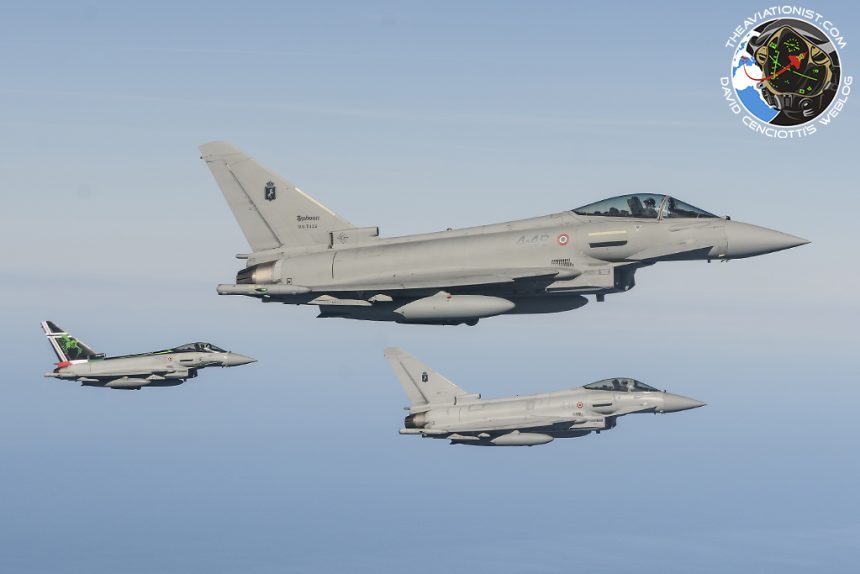Exercise Vega 2017 put the Italian Air Force’s most advanced “hardware” to test.
Vega 2017 (VG17) is the name of the Italian Air Force-led aerial exercise included in Joint Stars 2017, Italy’s largest joint drills organized this year “to train commands and forces undertaking various types of missions that may be required in future national and multinational operations. ”
The JS17 developed through two phases. The first one, dubbed Virtual Flag 2017 (VF17), took place from Jun. 10 to 15 and was a Command Post Exercise / Computer Assisted Exercise (CPX / CAX): a virtual exercise that, among the other things, simulated the planning and execution of an Air Heavy (AH) Theater Ballistic Missile Defense (TBMD)-oriented Small Joint Operation (SJO). Noteworthy, VF17 also featured several cyber threats and attacks to the network used to disseminate information among participating units.
The second part of the JS17, which began on Sept. 25 in the form of a CPX, continued from Oct. 16 to 27 as three “federated” exercises within a LIVEX (Live Exercise), an exercise made of actual assets. In particular, this phase saw the integration of three exercises: “Lampo 17” led by the Italian Army; “Mare Aperto 2017” led by the Italian Navy; and “Vega 2017,” the Italian Air Force’s exercise.
The Livex phase of JS17 focused on a SJO in the form of a Non-combatant Evactuation Operation (NEO) and included a series of tactical events, including an amphibious operation.
Dealing with the Italian Air Force, VG17 saw the involvement of 1,000 military, 40 aircraft, 7 airbases, one GCI site and several C2 (command and control) units, the task of those was to ensure air superiority within the context of a CSO (Crisis Support Operation) as well as various other missions flown in support of the other Armed Forces, including CAS (Close Air Support), SEAD (Suppression of Enemy Air Defenses), CSAR (Combat Search And Rescue), AEW-BM & C missions (Airborne Early Warning – Battlefield Management and Communication), tactical transport of operational personnel, evacuation of injured or endangered civilians.

The MOB (Main Operating Base) of the exercise was Trapani, in Sicily, where Eurofighter Typhoon aircraft with the 4°, 36° and 37° Stormo (the local-based Wing), along with Tornado IDS and ECR of the 6° Stormo and AMX of the 51° Stormo were deployed.

Decimomannu, in Sardinia, was the DOB (Deployment Operating Base) for the T-346 belong to the 212° Gruppo of the 61° Stormo , for the C-27J belonging to the 46^ Brigata Aerea, for the HH-101 and HH-139 of the 15° Stormo, for the HH-212 of the 9° Stormo.

F-4E Phantom jets of the 339 Mira (Squadron) of the Hellenic Air Force, at their latest international appearance before the unit was disbanded, after 65 years of history, on Oct. 31, 2017, took part in VG17 operating from “Deci” as well.


The other supporting assets mainly operated from their homebases: the G550 CAEW (Conformal Airborne Early Warning) aircraft of the 14° Stormo flew from Pratica di Mare, the KC-767 Tanker of the 14° and the KC-130J of the 46th Air Brigade, engaged in multiple daily sorties, operated respectively from Pratica di Mare and Pisa; the MQ-9 Predator B of the 32° Stormo, from Amendola.

Dealing with Amendola, it’s worth mentioning that two F-35A Lightning II of the 13° Gruppo supported Capo Teulada’s amphibious landing on Oct. 26 (as proved by one of the videos published by the Italian MoD on the website dedicated to the JS17 exercise), before landing, for the very first time, at Decimomannu airbase.

Among the most interesting things we have noticed during VG17, it’s worth a mention the fact that the F-2000s flew some sorties carrying the Litening targeting pod on the centerline pylon, most probably to support CAS missions, meaning that they were also tasked with Swing Role missions. In fact, a secondary air-to-surface capability of the the ItAF Typhoon fleet was developed back in 2015 and validated in 2016 with the participation in Red Flag 16-2 with three Tranche 2 aircraft that embedded the P1E(B) upgrades and were loaded with the latest SRP (Software Release Package) that allowed the use of GBU-16 Paveway II LGBs (Laser Guided Bombs).

VG17 featured some other interesting “firsts”: besides the G550 CAEW, at its first joint exercise [actually the aircraft has already taken part in a real operation, to secure the G7 summit in Taormina back in May 2017], the drills saw the operational debut of the T-346’s HMD (Helmet Mounted Display) system. The helmet system projects essential symbology and aiming parameters onto the visor, enhancing the pilot’s situational awareness and providing head-out control of aircraft targeting systems and sensors. The HMD coupled to its stunning performance and ability to simulate the flight characteristics of other aircraft and to replicate a wide array of sensors and weapons as if these were actually installed on the aircraft made the T-346, playing the Aggressor role, an even more realistic “Bandit” in the aerial engagements of VG17.

All the images in this post were taken by The Aviationist’s photographers Alessandro Fucito and Giovanni Maduli.









